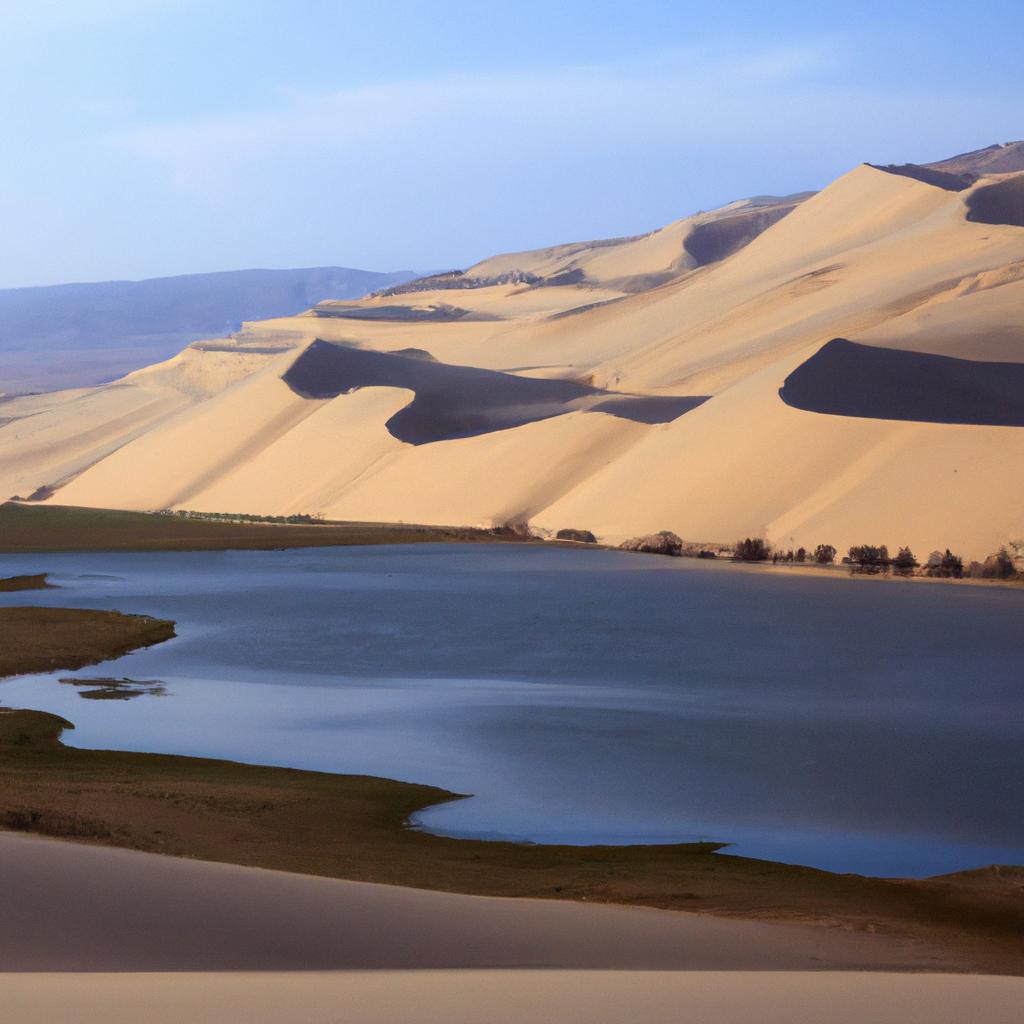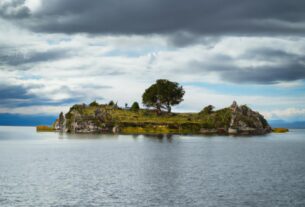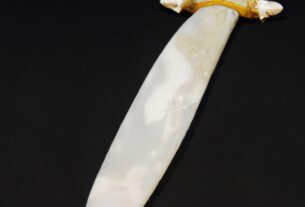A lake in a desert is a sight to behold, a natural wonder that defies expectations and captivates the imagination. It is a shimmering oasis, providing life-giving water in an otherwise harsh and arid environment. In this article, we will delve into the formation and types of lakes found in deserts, uncovering their ecological significance and the challenges they face.
Formation of Desert Lakes
Desert lakes come into existence through both natural and human-induced processes. Natural processes include rainfall, groundwater, and tectonic activity. When it rains, water accumulates in low-lying areas, forming temporary or permanent lakes. Groundwater, seeping to the surface, also feeds these lakes through springs. Tectonic activity, such as earthquakes and volcanic eruptions, carves depressions that fill with water, creating lakes of their own.
Human activities can also contribute to the formation of desert lakes. Dams, for example, store water for irrigation and other purposes, resulting in the creation of lakes. Quarrying, mining, and excavation activities can also create pits that naturally fill with water, becoming lakes. However, sustainable management of these human-induced processes is crucial to mitigating their potential negative impact on the environment.
In recent years, the creation of artificial lakes has become more prevalent in desert regions. These lakes are formed by diverting water from rivers or pumping water from underground aquifers, which is then stored in reservoirs, creating lakes. While these artificial lakes can provide recreational opportunities and support local economies, sustainable management is essential to avoid adverse environmental consequences.
Desert lakes can be classified into three main types: endorheic lakes, playa lakes, and sabkha lakes.
Endorheic Lakes – Stunning Closed Basins
Endorheic lakes are unique closed basins that do not drain into the ocean or any external water source. Precipitation, groundwater, or rivers feed these lakes, but the water stays within the basin without flowing out to the sea. Instead, the water either evaporates or seeps into the ground. Examples of endorheic lakes include the Great Salt Lake in Utah, USA, and the Dead Sea in Jordan and Israel.
Endorheic lakes are often highly saline due to the accumulation of minerals and salts from the surrounding rocks and soil. Despite their high salt concentration, these lakes offer crucial habitats for unique species of fish and other aquatic animals that have adapted to such extreme conditions.
Playa Lakes – The Temporary Marvels
Playa lakes are shallow and temporary, arising in depressions known as playas. These flat desert basins fill with water after heavy rainfall. Playa lakes can be found in arid regions worldwide, including the southwestern United States, Australia, and Africa.
Playa lakes serve as essential habitats for migratory birds, insects, and other wildlife. During the wet season, they also provide valuable grazing land for livestock. Nevertheless, they are highly vulnerable to human activities such as groundwater pumping, leading to a drop in the water table, and land use changes that reduce the overall water reaching the playas.
The Ecological Significance of Desert Lakes
Lakes in deserts play a vital role in supporting diverse ecosystems. They provide habitats for a variety of plants and animals that have adapted to survive in the harsh desert conditions. Desert lakes also offer crucial sustenance for migratory birds and other wildlife during their journeys.
In addition to supporting biodiversity, desert lakes contribute to nutrient cycling. They act as sinks for essential nutrients like nitrogen and phosphorus, which are vital for plant growth. As plants and animals die, their bodies decompose, releasing nutrients into the water. These nutrients, in turn, sustain other organisms within the lake ecosystem.
Desert lakes also have a significant influence on local and regional climates. They help moderate temperatures in the surrounding areas, providing a much-needed cooling effect in hot desert regions. Additionally, they contribute to the formation of clouds and precipitation, which sustain surrounding ecosystems and support human populations.
Challenges Facing Desert Lakes
Desert lakes face numerous challenges, with climate change and human activities at the forefront. Climate change is altering precipitation patterns, leading to reduced rainfall. This reduction can cause lakes to dry up, while increased temperatures accelerate evaporation, further reducing the available water for plants and animals.
Human activities like groundwater pumping, land use changes, and pollution also pose significant threats to desert lakes. Groundwater pumping lowers the water table, thereby decreasing the water available for lakes. Urbanization and agriculture result in changes to the landscape, reducing the overall water reaching the lakes. Agricultural runoff and other pollutants can degrade water quality, rendering it unsuitable for aquatic life and human consumption.
Conservation efforts are crucial to ensure the sustainability of desert lakes. Effective management strategies, such as sustainable water use, habitat restoration, and pollution control, can help protect these valuable ecosystems. Raising awareness among local communities and policymakers about the importance of desert lakes and the threats they face is also vital.
Conclusion
In conclusion, lakes in deserts are rare and breathtaking natural wonders with essential ecological significance. Endorheic, playa, and sabkha lakes contribute to diverse ecosystems, support nutrient cycling, and influence local and regional climates. However, they face formidable challenges, including climate change and human activities. To ensure the preservation of these invaluable resources, effective conservation efforts must be implemented. At TooLacks, we recognize the importance of desert lakes and are dedicated to promoting awareness and sustainable management strategies to protect and preserve these extraordinary marvels of nature.


